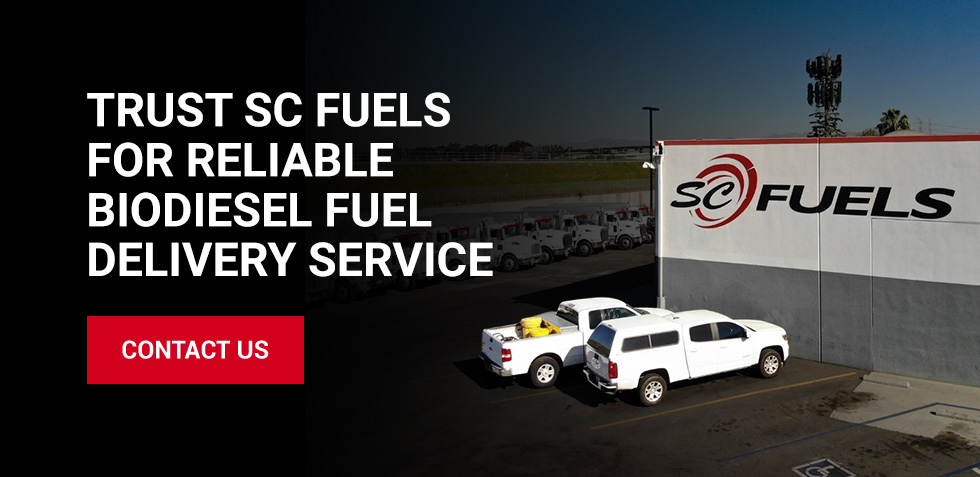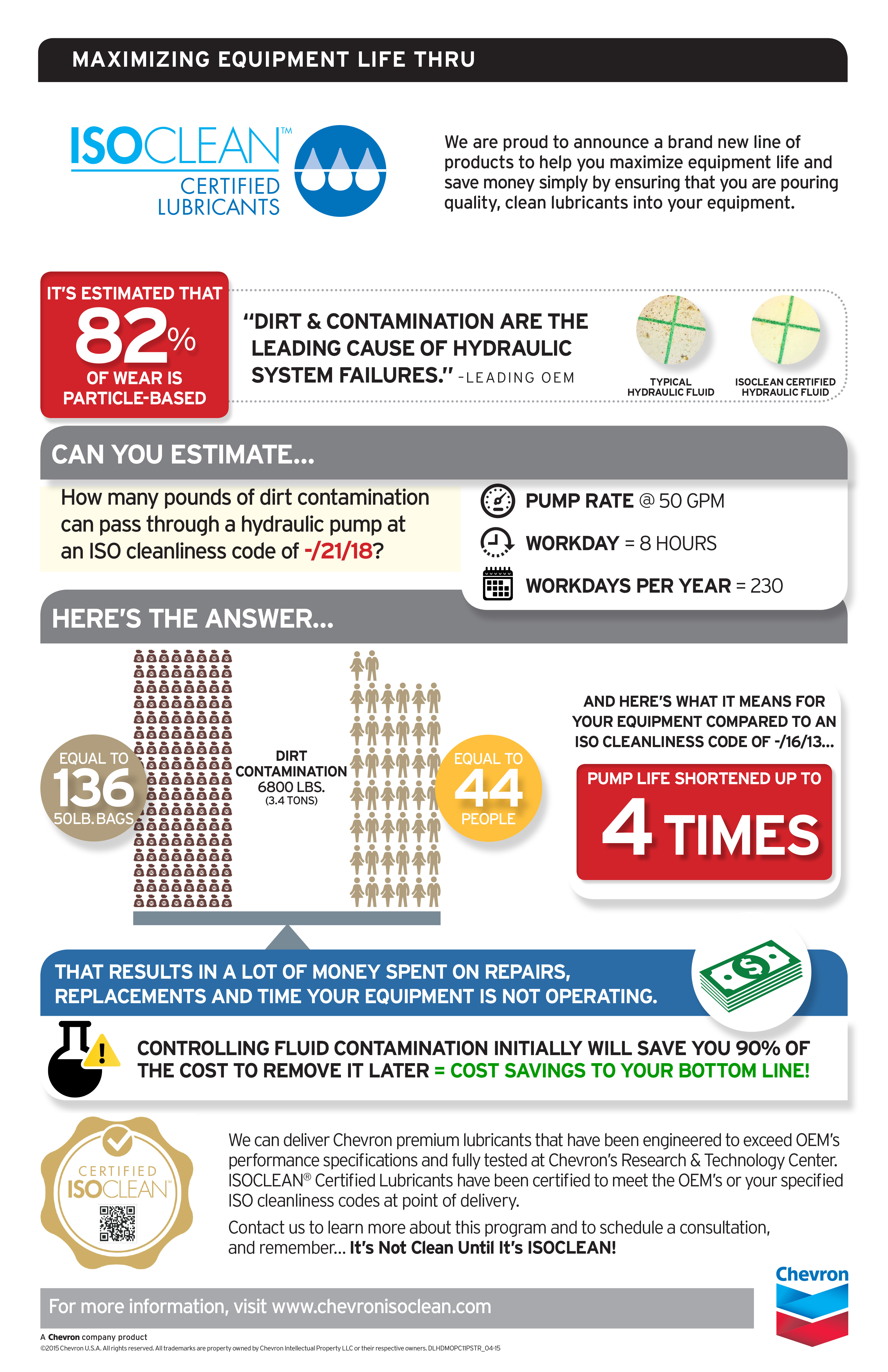If you own a trucking company or a gas station, it’s important to understand how different fuel types can impact your business and your customers. In addition to traditional diesel, alternative fuel choices such as biodiesel have become more available for trucking industries in recent years.
To learn more about biodiesel, explore its ingredients, environmental impact, and differences from diesel fuel. We will discuss whether biodiesel is the same as diesel fuel in terms of engine operation, fuel efficiency, performance, and cost. Our guide will help you learn the main differences between biodiesel and renewable diesel fuel and decide if transitioning to biodiesel is right for you.
What Is Biodiesel?
Biodiesel is known as a cleaner alternative to traditional petroleum-based diesel. It is one of the earliest biofuels and is produced through transesterification, a process that transforms oils and fats into usable engine fuel. This fuel, also called B100, is a pure type of biodiesel that is unblended with petroleum-based diesel.
Biodiesel fuel is made from feedstock and natural sources like vegetable oils, recycled cooking oils, algae, and animal fats. In the United States, biodiesel is primarily made from soybean oil, but other sources like sunflower oil, palm oil, and rapeseed oil also contribute to its production.
One of biodiesel’s key advantages is its reduced environmental impact. Comparing biodiesel vs. diesel, biodiesel considerably minimizes carbon monoxide production in engines because it contains 10% to 12% more oxygen than diesel fuel. Biodiesel generates lower emissions than conventional diesel, reducing harmful pollutants and particulates.
What Is the Difference Between Diesel and Biodiesel?
There are many notable differences between diesel and biodiesel. Composition and environmental impact are the main factors that define their contrast. As mentioned earlier, biodiesel comes from natural plant and animal fat sources. Meanwhile, diesel is a petroleum-based fuel derived from refined crude oil and biomass sources.
Traditional diesel contains carcinogenic benzene and sulfur. When an engine burns diesel, it produces pollutants that impact the environment and human health. These pollutants include sulfur oxide, carbon monoxide, nitrogen oxide, and particulate matter.
In 2006, the Environmental Protection Agency (EPA) mandated laws to regulate emissions, specifically to reduce the sulfur content of diesel. Today, most diesel available for on-road vehicles in the U.S. consists of ultra-low sulfur diesel.
The following are key factors that set diesel fuel and biodiesel apart.
1. Biodiesel vs. Diesel Engine Compatibility
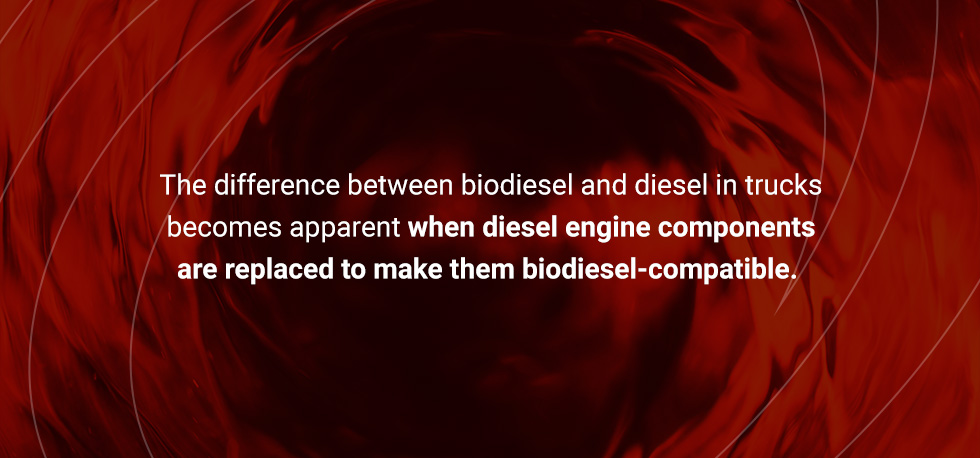
Modern diesel engines can generally operate on biodiesel with minimal or no required modifications. However, older diesel trucks might not be as compatible with biodiesel. Since biodiesel can degrade rubber, old truck models must update seals, gaskets, and fuel lines with more compatible materials.
The difference between biodiesel and diesel in trucks becomes apparent when diesel engine components are replaced to make them biodiesel-compatible. For example, fleet truck owners can change rubber seals and hoses to polyurethane, which is more durable and flexible than rubber. They can also use specially made thermoplastic elastomers for gaskets and seals to prevent leaks.
In contrast, traditional diesel engines are specially designed to work well with diesel fuel. Until alternative fuel sources like biofuel became more available, diesel has been the default truck fuel for many years.
How to Use Biodiesel in a Diesel Engine
Biodiesel can be used in many modern diesel engines, both in its pure B100 form or blended with petroleum diesel in varying amounts. Most original equipment manufacturers (OEMs) typically approve using biodiesel in diesel trucks because they use the same combustion engine.
The most popular biodiesel blend is B20, which comprises 6%-20% biodiesel mixed with petroleum diesel. Another common blend used in fleet vehicles is B5, which is 95% diesel and 5% biodiesel. Biodiesel blends improve fuel lubricity and increase the cetane number, which leads to fewer ignition delays and smoother engine starts for diesel trucks.
Generally, a biodiesel truck should operate safely on biodiesel blends without any issues. However, it is best to check your engine warranty, especially with an older truck.
Is Diesel Number Two a Biodiesel?
No. Diesel number two is not a type of biodiesel, though it is often mixed together with biodiesel to create blended fuels such as B5 and B20. Diesel number two is also commonly used for trucks hauling heavy loads.
There is a significant difference in cold-weather performance between biodiesel vs. diesel number two. Diesel number two performs normally during winter, while biodiesel is prone to gelling when temperatures significantly drop, which could compromise trucking operations.
2. Biodiesel vs. Regular Diesel Engine Combustion Properties
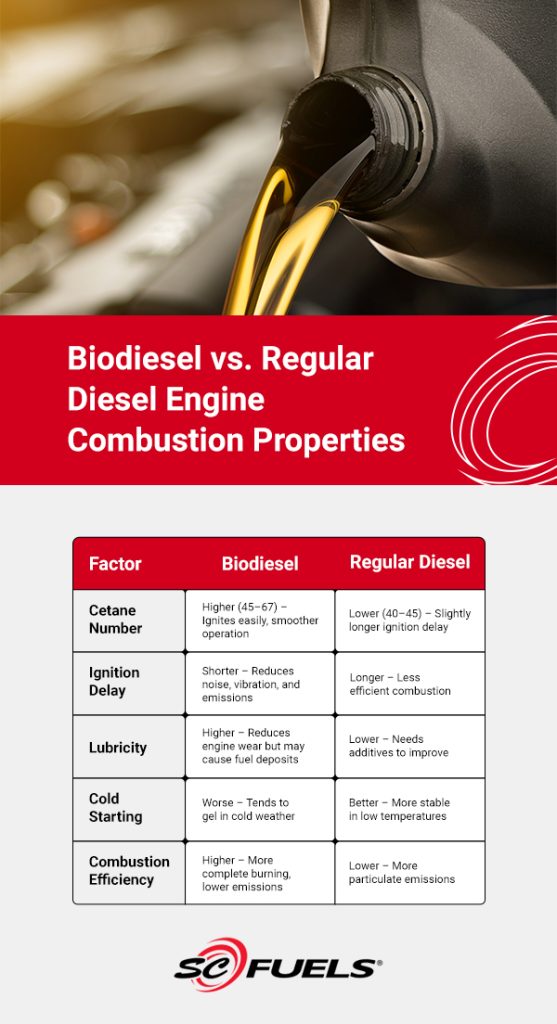
The following are key factors that affect engine combustion performance and efficiency when comparing biodiesel and diesel fuel:
- Cetane number: Biodiesel typically has a higher cetane number than diesel fuel. Biodiesel’s cetane number can range from 45 to 67, while diesel number two is usually between 40 to 45. A higher cetane value indicates how well the engine combusts, which signifies it ignites more easily. This promotes enhanced power, smoother engine operation, and lower emissions.
- Ignition delay: This is the time between fuel injection and ignition. Because of the high cetane, the ignition delay is often shorter for biodiesel-powered engines. The shorter delay leads to more efficient combustion, reducing engine vibration, noise, and smoke emissions. This helps increase truck reliability during operations.
- Improved lubricity: Lubricity is a fuel’s ability to reduce friction on engine components. It is vital in diesel engines to minimize wear on moving parts. Compared to regular diesel, biodiesel enhances lubricity in engines, with two percent being enough to improve operation and support engine longevity. However, high lubricity can create fuel deposits that obstruct filters. To avoid this, truck owners should change their filters more frequently.
- Cold starting: A higher cetane number generally helps improve cold weather starting. However, pure biodiesel, including fuel blends with higher biodiesel content, tends to freeze faster and gel during cold weather than diesel. This is due to compounds that easily crystalize at very low temperatures. Be mindful of using a high biodiesel blend if traveling in an extremely cold climate.
- Combustion efficiency: Biodiesel generally provides better combustion efficiency than diesel fuel, enabling more complete burning in the engine’s combustion chamber. As a result, it reduces particulate emissions and improves engine performance.
3. Diesel vs. Biodiesel Emissions Comparison
There are significant differences in environmental impact when comparing biodiesel and diesel’s life cycle emissions. While both fuels produce similar amounts of carbon dioxide during combustion, biodiesel’s carbon dioxide emission is partially offset by the growth of plants like soybeans and other feedstock used to make biodiesel fuel. This leads to a notable decrease in net carbon dioxide emissions over its life cycle.
The U.S. Department of Energy reports that pure biodiesel emissions are reduced by 74% compared to diesel. Meanwhile, a B20 blend reduces carbon dioxide emissions by 15%.
The difference between diesel and biodiesel is also apparent when observing other emission pollutants. Research published by the Institute of Physics (IOP) revealed the following results:
- Carbon monoxide: Pure biodiesel produces significantly lower carbon monoxide emissions than regular diesel.
- Hydrocarbon: Diesel generates higher hydrocarbon emissions than biodiesel, suggesting that biodiesel supports a cleaner combustion process.
- Nitrogen oxides: Pure biodiesel generally produces higher nitrogen oxide emissions than diesel. However, modern diesel vehicles manufactured from 2010 onwards are equipped with selective catalytic reduction technology. This significantly reduces nitrogen oxide emissions by transforming nitrogen oxide into water vapor and non-toxic nitrogen.
4. Diesel Fuel vs. Biodiesel Fuel Efficiency
Diesel contains more energy per gallon, which allows vehicles to travel farther with less fuel. For this reason, diesel is the preferred fuel choice for long-haul trucking. Modern improvements in diesel engine technology, such as enhanced electronic engine controls and improved fuel injection systems, also make diesel perform optimally. Petroleum diesel is 10% to 15% more fuel-efficient than gasoline-powered vehicles.
In contrast, B100 biodiesel is not the same as regular diesel in terms of 10% lower fuel efficiency. However, you can opt for a B20 biodiesel, with two percent lower fuel efficiency than diesel, to improve fuel economy. Over time, biodiesel’s higher fuel consumption translates to increased operational costs, especially for B100. However, biodiesel is still a more sustainable and less polluting option than diesel fuel.
Ongoing Support for Biofuel Production
The government has enacted federal biodiesel laws and incentives to support the development of advanced biofuels and reduce the cost of production. With government assistance, biodiesel fuels should become more competitive with traditional fuels, helping offset their higher operational costs.
For example, the U.S. Department of Agriculture (USDA) Biomass Crop Assistance Program helps landowners grow biomass feedstock crops for biofuel production. This program offers reimbursement and matching payments to feedstock crop producers, encouraging more landowners to produce materials for biodiesel.
As petroleum-based fuel prices rise, the government imposes stricter environmental regulations on vehicles. Biodiesel is a sustainable fuel source that is environmentally friendly and can be a more economical option in the future. Its production supports local economies and minimizes dependence on imported fuels.
5. Fuel Cost Comparison Between Biofuel vs. Diesel
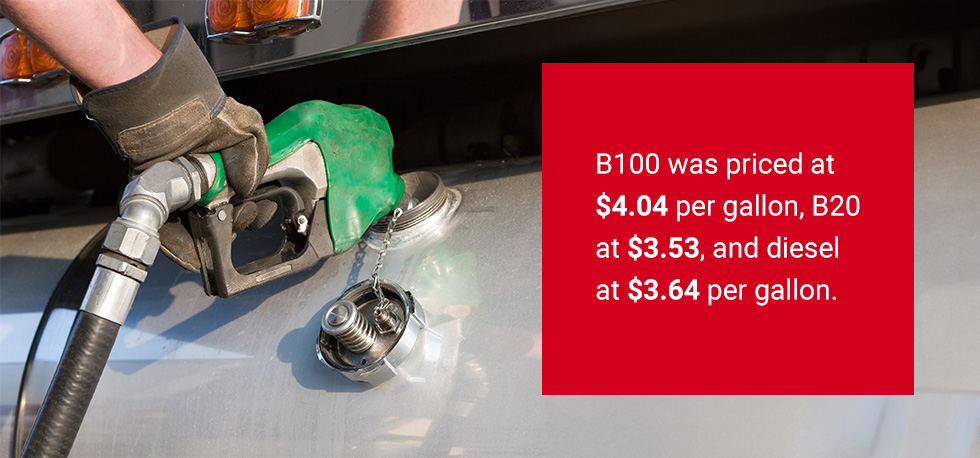
Biodiesel and diesel costs vary widely depending on the region, taxes, biodiesel blend, and other factors. Pure B100 tends to be more expensive than diesel, while B20 is usually priced lower than conventional diesel. When we consider the national fuel price averages between October 1 and 15, 2024, B100 was priced at $4.04 per gallon, B20 at $3.53, and diesel at $3.64 per gallon.
Diesel prices largely depend on regular fuel cost factors, such as taxes and regulations, refining, distribution, and marketing. For example, in 2023, consumers spent 14.4% on federal and state taxes when paying for a gallon of regular diesel. Meanwhile, biodiesel prices can fluctuate based on the available feedstocks for production and state-specific incentives.
For example, the biodiesel income tax credit, which was discontinued in January 2025, incentivized the production and use of biodiesel in the U.S. As a credit against income tax liability, it allowed taxpayers who used biodiesel as fuel in their business or delivered pure biodiesel to receive one dollar per gallon. This law supported local biodiesel producers over foreign suppliers by making domestic biodiesel more accessible. It aimed to increase biodiesel supplies against market reliance on increasing imports.
Shortage of Biodiesel Supply Increases Its Price
A lack of biodiesel fuel compared to diesel can raise biodiesel prices. Without biodiesel tax incentive programs, domestic producers might find it challenging to implement competitive prices. This is due to their dependence on imports to meet market demands, which increases biodiesel costs, especially if imported supplies come from countries with higher tariffs and production costs.
Consequently, when biodiesel is less accessible, diesel becomes a more viable and practical option, especially for long-hauling truck fleets.
What’s the Difference Between Biodiesel and Renewable Diesel?
Biodiesel and renewable diesel are both sustainable alternatives to regular diesel. However, they differ significantly in their production process and properties. Biodiesel is created through a process called transesterification. It has a higher freezing point than regular diesel, is prone to gelling in colder weather, and cannot be transported using pipelines.
In contrast, renewable diesel is made through a traditional hydrotreating process, producing a clean, pure fuel that is chemically identical to regular petroleum diesel. This is more compatible with existing diesel engines, providing reliable performance with fewer engine issues. It has a higher energy density than biodiesel, offering improved fuel efficiency and potentially reducing fuel consumption over the long term.
In addition, renewable diesel can be transported through pipelines and stored alongside regular fossil fuels. It also has a lower freezing point than biodiesel, making it more suitable for truck operations in colder climates. In terms of cost, renewable diesel is typically more expensive than biodiesel because it requires a complex production process with better-quality feedstock.
Trust SC Fuels for Reliable Biodiesel Fuel Delivery Service
Whether you own a large trucking fleet or a gas station, having a dependable fuel delivery service is a cost-effective way to get top-quality fuel for your business — partner with SC Fuels to get bulk diesel, renewable diesel, and biodiesel fuel delivery straight to your location. We provide branded and unbranded wholesale fuel delivery services throughout the U.S., including gasoline, diesel, off-road diesel, and EPA diesel.
In business since 1930, SC Fuels is a leading family-owned fuel supply company that implements strict staff training and performance standards. We keep thousands of commercial and industrial businesses operational with reliable fuel delivery services and other high-quality petroleum products.
Contact us online today and we will help you find the best fuel delivery solution for your business. We provide safe, accurate, and on-time delivery with unmatched 24/7 customer service.


